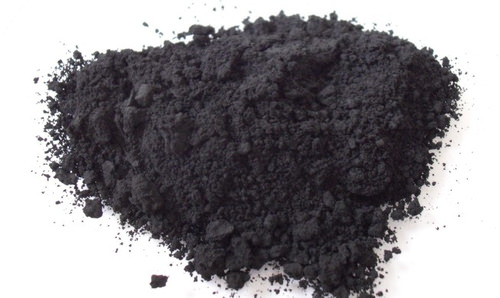19.8 温度效应
章节大纲
-
You don’t want to inhale this stuff!
::你不会想吸入这些东西吧!We tend to think of carbon monoxide only as a hazardous produced from incomplete combustion of carbon products. However, there is a large market for industrially-manufactured carbon monoxide that is used to synthesize most of the acetic produced in the world. One reaction that leads to CO formation involves its formation by passing air over excess carbon at high temperatures. The initial product (carbon dioxide) equilibrates with the remaining hot carbon, forming carbon monoxide. At lower temperatures, CO 2 formation is favored while CO is the predominant product above 800°C.
::我们往往认为一氧化碳只是由碳产品不完全燃烧产生的一种危险产品。 然而,工业制造的一氧化碳有一个巨大的市场,用来合成世界上生产的大多数乙酸化合物。导致二氧化碳形成的一种反应是在高温下通过空气形成而超过过剩的碳。初始产品(二氧化碳)与剩余的热碳平衡,形成一氧化碳。在较低的温度下,二氧化碳形成得到偏好,而二氧化碳是800°C以上的主要产品。Effect of Temperature
::温度效应Increasing or decreasing the temperature of a system at equilibrium is also a stress to the system. The equation for the Haber-Bosch process is written again below, as a .
::平衡时系统温度的上升或下降也是系统的压力。 Haber-Bosch过程的方程式在下文中又以一个方式写成。
::N2(g) +3H2(g) 2NH3(g) +91 kJThe forward reaction is the exothermic direction: the formation of NH 3 releases . The reverse reaction is the endothermic direction: as NH 3 decomposes to N 2 and H 2 , heat is absorbed. An increase in the temperature of a system favors the direction of the reaction that absorbs heat, the endothermic direction. Absorption of heat in this case is a relief of the stress provided by the temperature increase. For the Haber-Bosch process, an increase in temperature favors the reverse reaction. The of NH 3 in the system decreases, while the concentrations of N 2 and H 2 increase.
::前方反应是发热方向:NH3释放的形成。反向反应是末方方向:当NH3分解到N2和H2时,热被吸收。系统温度的上升有利于吸收热的反应方向,即最终热方向。在这种情况下,吸收热是减轻温度升高带来的压力。对于Haber-Bosch过程来说,温度的上升有利于反向反应。NH3在系统中的下降,而N2和H2的浓度则增加。A decrease in the temperature of a system favors the direction of the reaction that releases heat, the exothermic direction. For the Haber-Bosch process, a decrease in temperature favors the forward reaction. The concentration of NH 3 in the system increases, while the concentrations of N 2 and H 2 decrease.
::系统温度下降有利于释放热反应的方向,即发热方向。 对于Haber-Bosch过程,温度下降有利于前方反应。 NH3在系统中的浓度增加,而N2和H2的浓度则下降。For changes in concentration, the system responds in such a way that the value of the equilibrium constant , , is unchanged. However, a change in temperature shifts the equilibrium and the value either increases or decreases. As discussed in the previous section, values of are dependent on the temperature. When the temperature of the system for the Haber-Bosch process is increased, the resultant shift in equilibrium towards the reactants means that the value decreases. When the temperature is decreased, the shift in equilibrium towards the products means that the value increases.
::对于浓度的变化,系统的反应方式是平衡常值Keq的值不变。但是,温度的变化会改变平衡和Keq值的增减。如上一节所述,Keq的值取决于温度。当Haber-Bosch过程的系统温度上升时,随之产生的平衡向反应体的转变意味着Keq值的下降。当温度下降时,平衡向产品的变化意味着Keq值的增加。Le Châtelier’s principle as related to temperature changes can be illustrated easily by the reaction in which nitrogen tetroxide is in equilibrium with nitrogen dioxide.
::氧化氮与二氧化氮处于平衡状态的反应,可以很容易地说明Chatelier关于温度变化的原则。
::N2O4(g) + heat2NO2(g)Dinitrogen tetroxide (N 2 O 4 ) is colorless, while nitrogen dioxide (NO 2 ) is dark brown in color. When N 2 O 4 breaks down into NO 2 , heat is absorbed according to the forward reaction above. Therefore, an increase in temperature of the system will favor the forward reaction. Conversely, a decrease in temperature will favor the reverse reaction.
::二氧化二氮(N2O4)是无色的,而二氧化二氮(NO2)是深褐色的。当N2O4分解成二氧化二氮时,根据上述前方反应吸收热量。因此,系统温度的上升有利于前向反应。相反,温度的下降有利于反向反应。Watch a video demonstrating the effect of temperature on the equilibrium between NO 2 and N 2 O 4 .
::观看一段视频,展示温度对NO2和N2O4之间平衡的影响。Summary
::摘要-
The effect of temperature on the direction of an equilibrium reaction is described.
::介绍了温度对平衡反应方向的影响。
Review
::回顾-
Which is the exothermic direction in the Haber process?
::哈伯过程的发热方向是什么? -
If we put more heat energy into the system, which way will the equilibrium shift?
::如果我们把更多的热能投入到系统中, 平衡会以什么方式改变? -
How can we pull the reaction more strongly to the right?
::我们怎样才能对右边作出更强烈的反应?
-
The effect of temperature on the direction of an equilibrium reaction is described.
